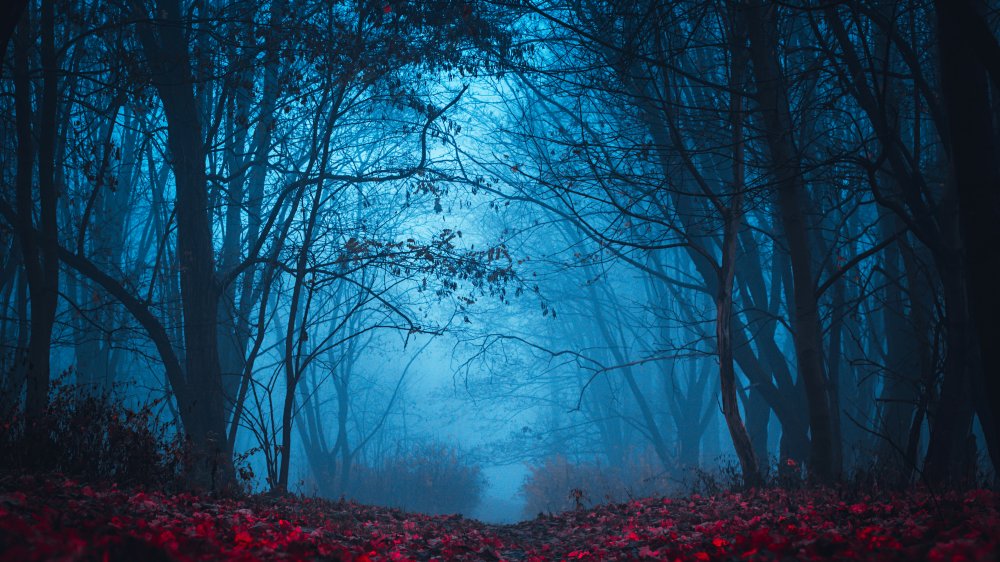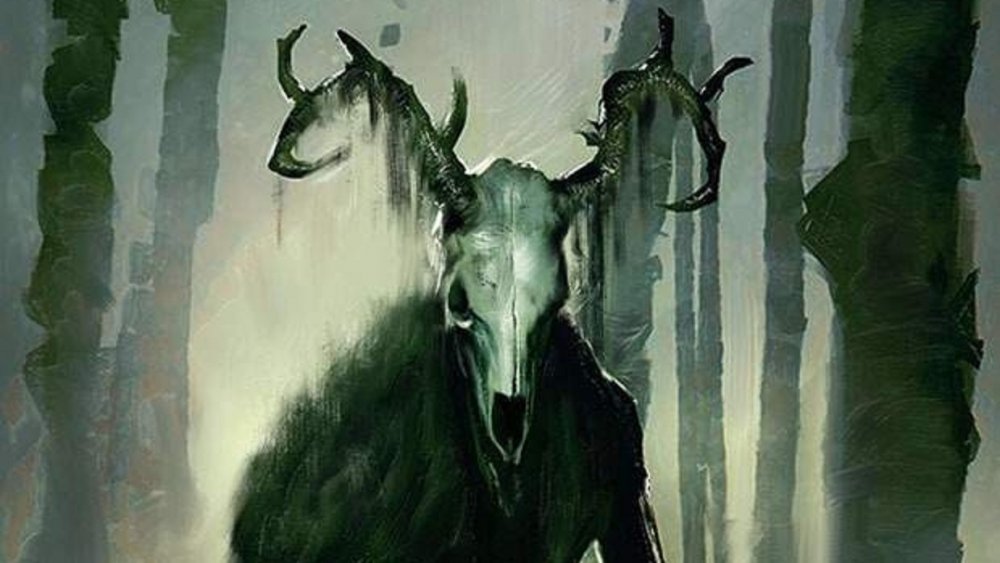The Wendigo Might Actually Have Existed. Here's Why
Cryptids are a relentless source of speculative fun. Bigfoot, Yeti, The Loch Ness Monster, Ogopogo, La Chupacabra, The Jersey Devil, and countless tales of strange creatures from around the world, including, per Mental Floss, the snake-like Grootslang from South Africa, and Mongolia's Olgoi-khorkhoi, a sand serpent under the Gobi desert with toxic skin that instantly kills those who touch it (Frank Herbert's sandworms from Dune have some stiff competition).
But how about the wendigo? A bit more sinister than many of its cryptic cryptid cousins, this humanoid from Algonquin legend roams the forests of Canada and the Northern United States, driven by an insatiable need for human flesh and crying out in a perfectly human voice to lure people into the woods to devour them, as described in All That's Interesting. Driven by hunger, the wendigo can endure brutal winters and trek for long periods of time. In some versions of the legend, this creature acts as a sort of spiritual werewolf, possessing others and changing them into beasts. Its appearance varies from tale to tale, but is typically a 15-foot tall, skeletal, emaciated fiend with massive claws and eyes like an owl, who Native author Basil H. Johnston describes in Legends of the Nahanni Valley, "...with its bones pushing out over its skin, its complexion the ash gray of death, and its eyes pushed back deep into the sockets..."
Needless to say, this is all quite horrifying. What's more horrifying, in fact, is the possibility that it's true.
A symbol of fear, savagery, and loss of self
Of course, it makes sense that in an isolated, natural, harsh environment, there is a fear of getting lost, not having enough food, succumbing to the elements, and turning into a savage marauder simply to survive. Cannibalism is perhaps the worst fate that many could envision, such as in 1972 when an Uruguayan rugby team's plane crashed in Chile in the aptly-named Valley of Tears, as outlined in National Geographic, and the survivors resorted to eating each other.
Such is the case with the wendigo, whose legend likely grew from some real-life murderers and cannibals within the Rocky Mountains. According to the Algonquin, many people went missing from the late 1800s to the early 1900s. Non-coincidentally, this is when stories of the wendigo flourished, fueled by individuals such as Swift Runner, who in 1879 murdered and ate his entire family while claiming to be under the "wendigo spirit." This and other, similar stories from that time gave the wendigo its nicknames, "spirit of lonely places" and "the evil spirit that devours mankind."
The simplest and least glamorous version of the wendigo story may be the most likely, however: He was just a simple hunter who got lost and couldn't find food. He represents the violence of the natural world as it's inflicted on people subject to its whims, and could even symbolize the fear of the loss of self and land felt by indigenous people who came face-to-face with European colonizers.

